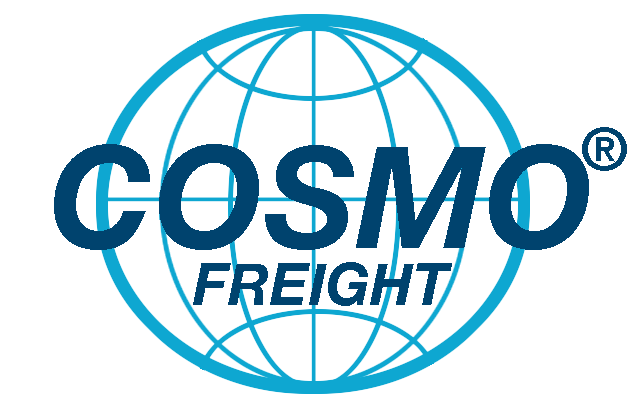US Presidential Election impact US trade line
Navigating the Freight Challenges Ahead: US Presidential Election’s Impact on European Exports
As the dust settles after the recent US presidential election, a significant shift is on the horizon for international trade, particularly for European businesses exporting goods to the United States. The anticipated increase in import duties for European products, coupled with logistical challenges in both air and ocean freight, is creating a perfect storm of pressure on exporters. This article delves into the impact of these developments, highlighting the current surge in demand for exports to the US and the rising freight rates that are making global shipping more complicated than ever.
The Impending Import Duty Hike: What’s Driving the Change
With the new administration settling into office, it has become clear that significant changes are likely to be made to trade policies, especially in the realm of tariffs. While the specific details are still emerging, the US government has signaled an intention to increase customs duties on many European products. This shift in policy is primarily being driven by broader strategic goals, including boosting domestic manufacturing, addressing trade imbalances, and revising long-standing trade agreements.
 For European businesses, this means facing higher costs when exporting to the US. The anticipated tariff increase has prompted a rush to ship goods to the US market before these changes take effect. Companies across various sectors—ranging from luxury goods and automotive parts to industrial machinery and consumer products—are eager to lock in favorable rates and avoid the higher costs that will come with the new import duties.
For European businesses, this means facing higher costs when exporting to the US. The anticipated tariff increase has prompted a rush to ship goods to the US market before these changes take effect. Companies across various sectors—ranging from luxury goods and automotive parts to industrial machinery and consumer products—are eager to lock in favorable rates and avoid the higher costs that will come with the new import duties.
Surge in Demand: Exporters Are Racing Against Time
The impact of these potential tariff hikes has already been felt across European industries. As businesses try to export as much as possible before the duties are imposed, freight volumes have surged, placing additional strain on an already overburdened logistics system.
Many companies, particularly those in sectors like fashion, technology, and food production, are facing a tight timeline to get their products across the Atlantic. This “rush to ship” phenomenon is akin to a pre-tariff “fire sale” where European exporters are trying to maximize profits and minimize the impact of the coming cost increase.
In addition to the demand for exports, there has been a noticeable shift in shipping patterns, with a significant increase in the number of containers and air freight shipments heading for US ports and airports. This sudden demand surge is leading to capacity shortages across both ocean and air freight sectors.
Capacity Crunch in Air and Ocean Freight
While the demand for exports is increasing, the capacity to meet this demand is dwindling. Both air cargo and ocean shipping sectors are currently grappling with serious capacity constraints.
On the ocean freight side, the global shipping industry is still recovering from the disruptions caused by the COVID-19 pandemic, and a shortage of available container space continues to haunt businesses. Many shipping lines are reporting booking delays, and port congestion is leading to longer transit times. These factors are exacerbated by the influx of cargo destined for the US, further tightening space availability.
In the air freight sector, the situation is similarly dire. Air carriers are still dealing with staffing shortages, limited aircraft availability, and operational delays. While demand for air freight typically surges in the lead-up to major holidays and shopping seasons, the current increase in exports to the US due to tariff concerns is placing additional strain on the sector. With fewer available flights and higher demand, air freight prices have seen sharp increases.
Rising Freight Rates: A Symptom of the Strain
As the gap between demand and available capacity widens, freight rates have been steadily climbing across both air and ocean transport. For exporters, this means higher shipping costs, adding yet another layer of complexity to the already challenging logistics environment.
For ocean freight, container rates have skyrocketed, with some regions experiencing increases of up to 50-100% over the past year. The rising cost of fuel, port fees, and logistical bottlenecks are all contributing factors to this upward trend.
In the air freight sector, prices are similarly on the rise, with some shipments seeing price hikes of 20-30% depending on the route and cargo type. Additionally, air freight is being increasingly used for time-sensitive shipments, further driving up the rates.
### What This Means for European Exporters
For European companies, navigating these turbulent waters requires careful planning. The combination of higher tariffs, limited shipping capacity, and escalating freight rates means that exporters need to be more strategic than ever before. Here are a few key takeaways for businesses looking to adapt to the evolving market:
1. Act Now, Plan for the Future: With tariffs likely to rise soon, companies should prioritize shipping their products to the US as quickly as possible to avoid the impact of the higher duties. Planning shipments in advance and securing space with carriers early can help mitigate potential delays and cost increases.
2. Leverage Freight Optimization: With capacity in short supply, companies should work closely with freight forwarders to identify the most cost-effective and reliable routes. Consolidating shipments, choosing less congested ports, and exploring alternative transportation options may help reduce costs and avoid delays.
3. Expect Higher Shipping Costs: As freight rates continue to rise, businesses should factor these increased costs into their pricing strategies. Additionally, it’s wise to explore long-term contracts with carriers to lock in rates and ensure more predictable costs in the future.
4. Diversify Supply Chains: Given the uncertainty around tariffs and freight availability, it’s wise for European exporters to explore alternative markets and diversify their supply chains. Diversifying customers, markets, and even shipping routes can provide a cushion in case the US becomes less predictable or more expensive to serve.
Conclusion: Preparing for a Changing Landscape
The upcoming changes in US trade policy, combined with the current capacity crunch and rising freight rates, present a challenging environment for European exporters. The race to ship goods before new tariffs take effect is placing significant strain on global supply chains. For businesses navigating this shifting landscape, proactive planning, strategic logistics management, and flexibility will be essential in minimizing costs and ensuring timely deliveries.
At Cosmo Freight, we understand the challenges facing exporters today. Our team is ready to assist businesses in navigating the complexities of international shipping, offering expert advice and tailored solutions to help you stay ahead of the curve in this rapidly changing environment. Whether you need to expedite shipments or secure space in a crowded market, Cosmo Freight is here to support your global logistics needs.



